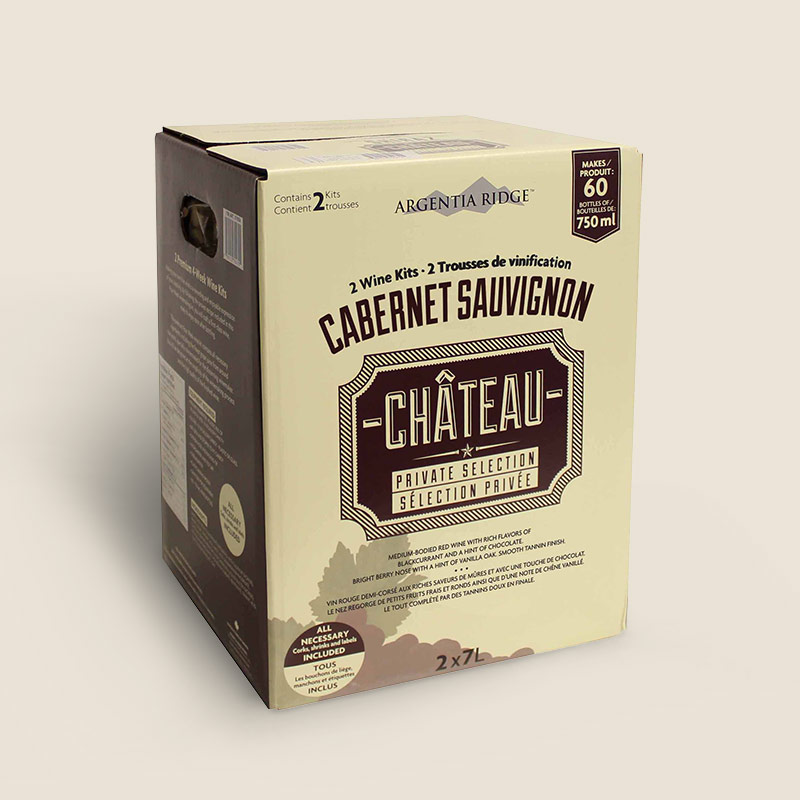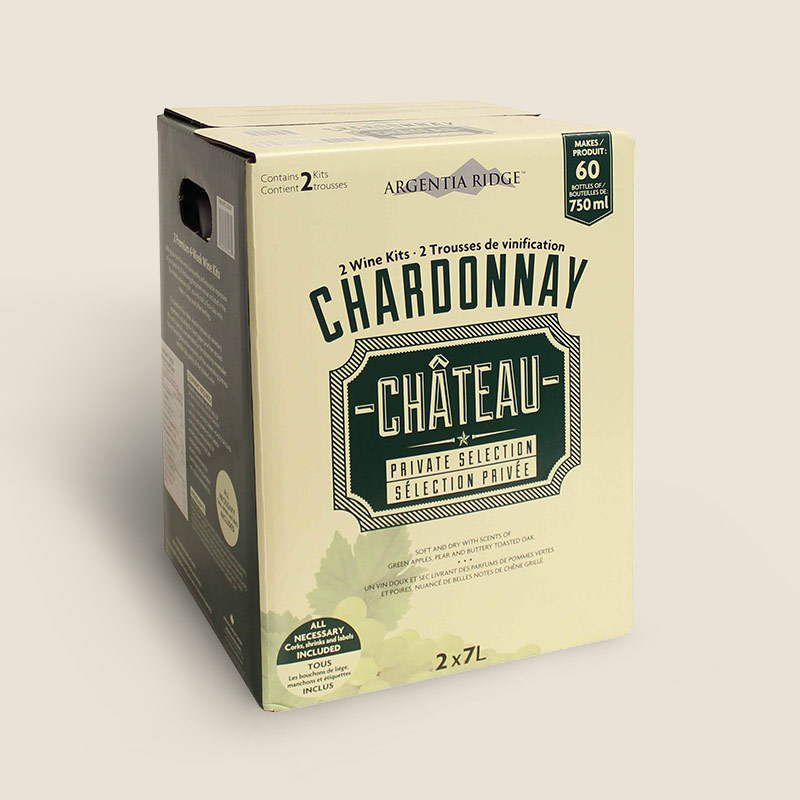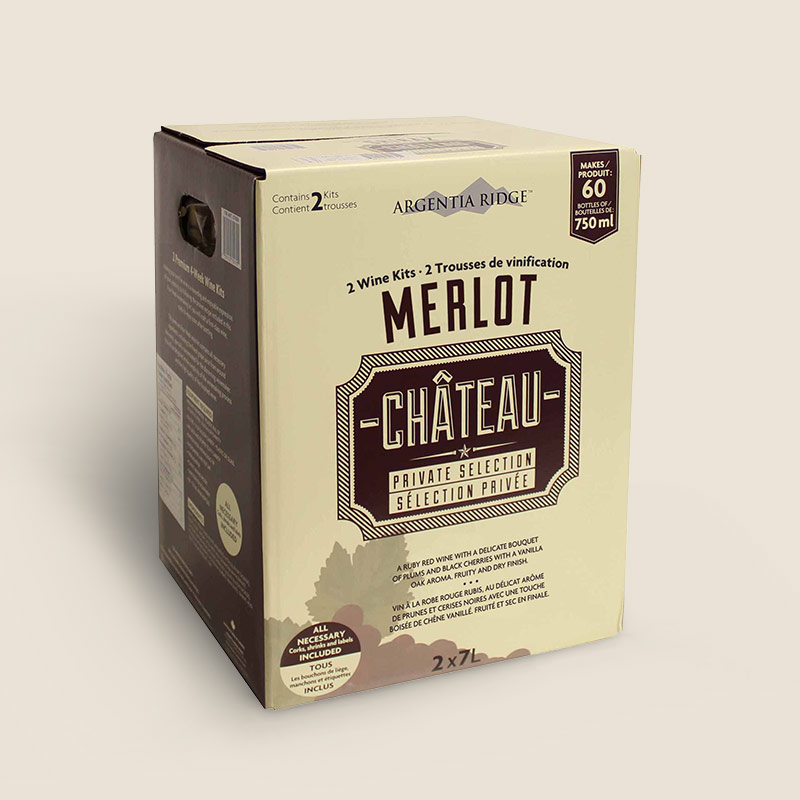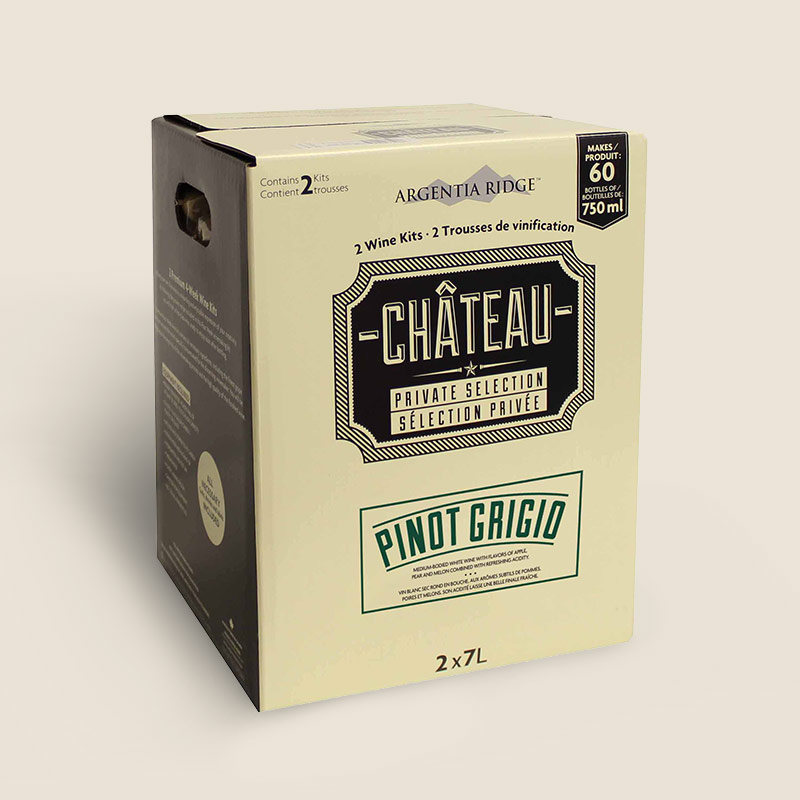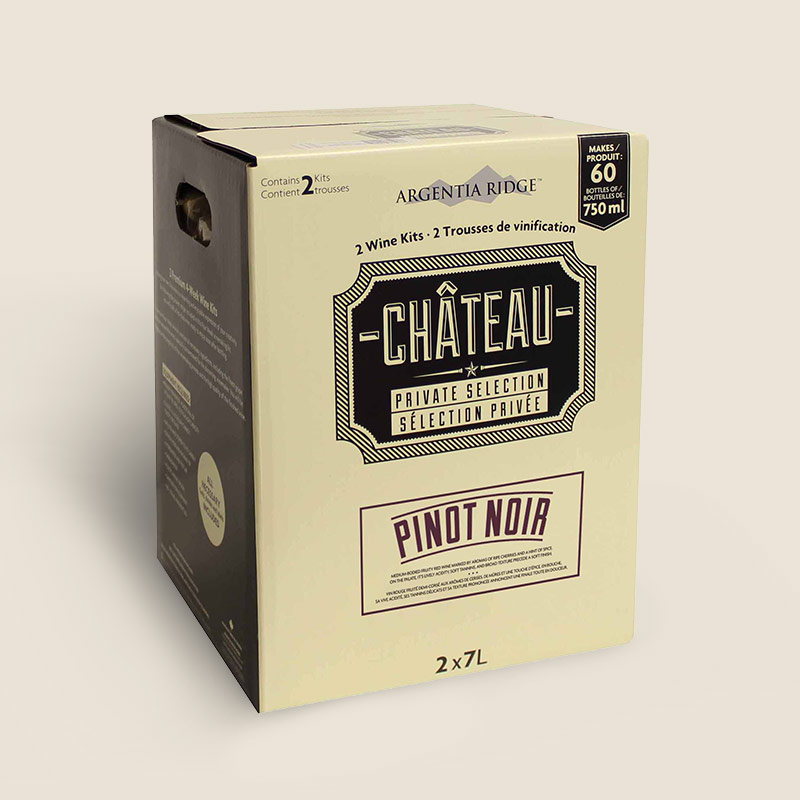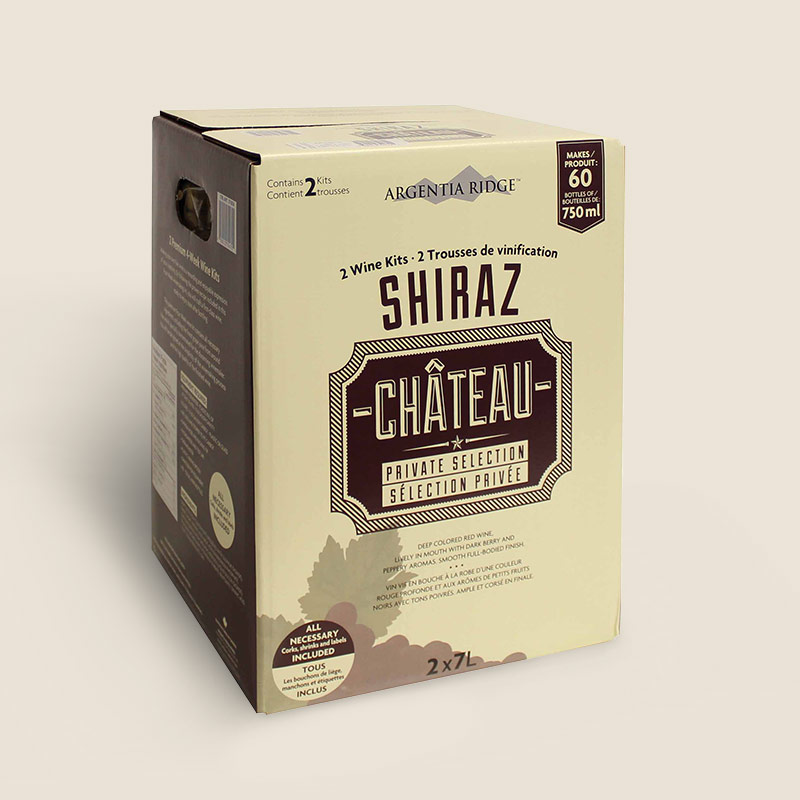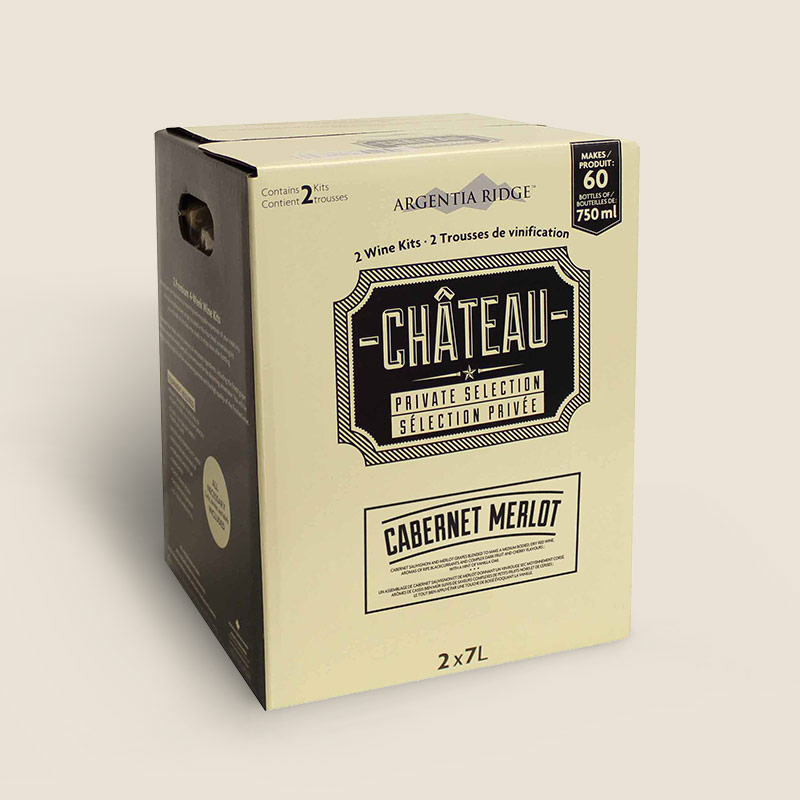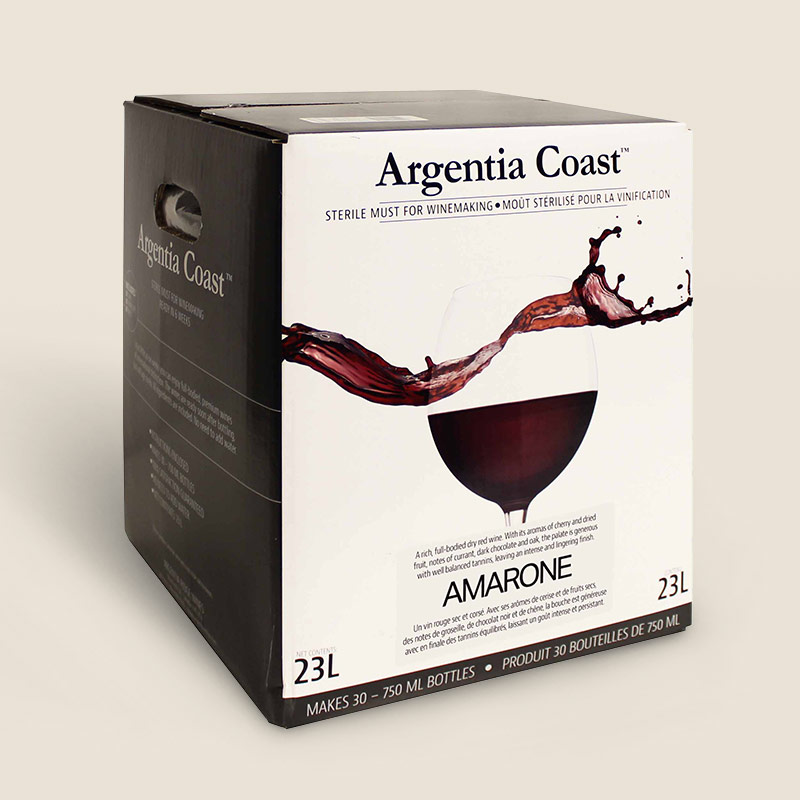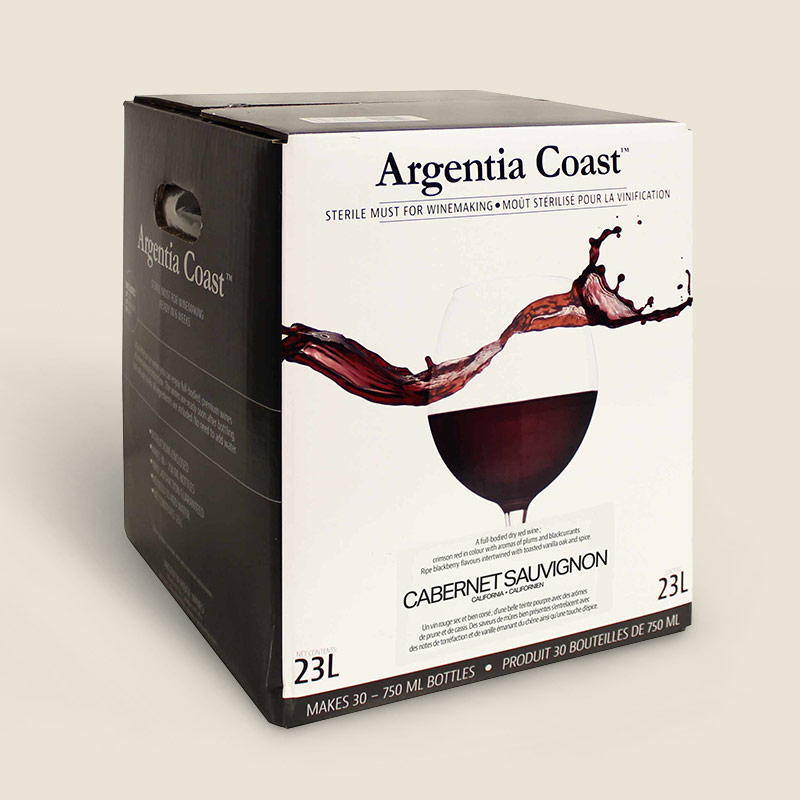
Argentia ridge
Wine kits that will satisfy the greatest wine enthusiasts
Our wine kits provide superior quality wine in four to six weeks. You will discover a diverse range of products and variety, enough to satisfy the greatest enologists.
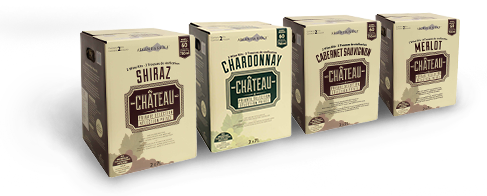
- Shiraz
- Chardonnay
- Cabernet Sauvignon
- Merlot
Summer is here!
Try these wine kits that will pair perfectly with your Fall meals.
A sure hit for you and your guests.
100 years of experience in wine and winemaking.
Welcome to Argentia Ridge! With over 100 collective years of wine and wine-making experiences, we at Argentia Ridge are Wine Masters and Wine Makers. We know wine and we know wine-making. We have a love of the grape, an unquenchable passion for wine, and the knowledge and belief that with our expertise, you will make wines with better taste and better value than you'll find at comparable retail locations. We are proud to offer you, your friends, your family, and fellow winemakers an inspired collection of wines to be enjoyed, celebrated, and savored every day.
Whether you are enjoying a quiet evening or celebrating with friends and family, our wines will satisfy the wine enthusiast within you. At the end of a successful wine-making day, we are winemakers just like you. Whether you are a wine-making expert or an enthusiastic first-timer, we know the excitement of the winemaking process and understand the convenience and enjoyment that comes from making high-quality wine.
We offer you wine kits that are guaranteed to meet your high standards. If for any reason you are not satisfied with your Argentia Ridge wine kit, you may return it for replacement or full refund.



Wine : How it’s made?
Step 1
Primary fermentation
The primary fermentation is the first phase of wine making. Here you need to add the contents of the bentonite bag to 250ml of hot water in the fermentation tank. Then you need to add fresh water until you reach 23 liters. Afterwards, you just have to shake the contents for two minutes to obtain adequate fermentation.
This first stage ends with the addition of yeast on the surface of the liquid and then fermenting the wine in a warm place for 10 days.
Method of classic wine: To obtain greater control in the step of fermentation, the winemaker also adds yeast in the conventional manufacture of wine. For more detailed instructions please view the following video :
https://www.youtube.com/watch?v=MDRk2Z0tb_c
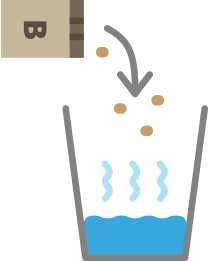
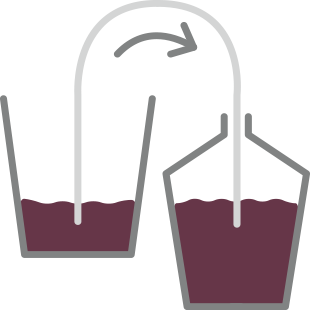
Step 2
Secondary fermentation
Once you have reached the desired density level, you need to siphon the wine from the fermentation tank to the carboy (the dregs must remain in the vessel.) Then, you must place the jug on the counter for 8 days, until the fermentation is complete.
Method of traditional wine: wine which is found in the bottom is pumped regularly allowing the yeast to efficiently carry out the fermentation liquid.
Step 3
Stabilization
At this point, you need to siphon the wine from the carboy on the counter to a clean carboy. You will be asked to sprinkle the contents of the metabisulfite bag. You will need to stir vigorously for 15 minutes to allow carbon dioxide to escape.
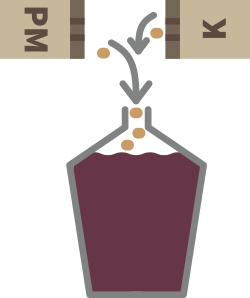
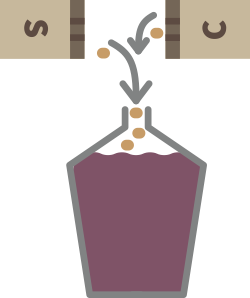
Step 4
Clearing
You must add the contents of potassium sorbate bag and then place
Chitosan to the carboy on a counter. This action will allow the
formation of a deposit. Finally, you must let the wine sit for 10 days,
which will allow its clarification.
Step 5
Final Clearing – applicable to only certain kits
This step is applicable only to our Argentia Coast Kit. In this step you
will be asked to perform an additional clearing process by siphoning
the wine from one carboy to another carboy.
Following this process, you will add clean, room temperature water or a similar finished wine into the neck of the carboy to within two inches of the bottom of the fermentation lock.
You must then leave the wine to clear for one to three weeks.
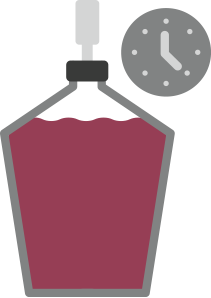
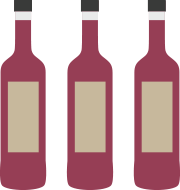
Step 6
Bottling
Now that the wine is clarified, you can switch to siphon the liquid to the empty bottles. It is recommended to leave a space of 2.5 cm between the wine and the base cap. It only remains to affix the labels and shrink caps.
Traditional Method: In the traditional method wine, the winemaker also filters the wine to give it more clarity.
You are finally ready to enjoy your final product!
Wine Food Pairing

Dishes:
Green Veggies,
Roasted Veggies,
Fish
Light dry white wine:
Sauvignon Blanc
Pinot Grigio
White Zinfandel
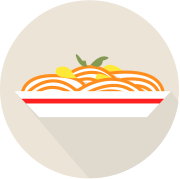
Dishes:
Roasted Veggies,
Pasta,
Rich Fish (Crab),
White meats
Rich white wine:
Chardonnay

Dishes:
Roasted Veggies,
Pasta,
Rich Fish,
White Meats
Light red wine:
Pinot Noir
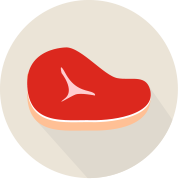
Dishes:
Hard Cheeses,
Pasta,
White Meats,
Red Meats,
Cured & Smoked Meats
Medium red wine:
Merlot
Cabernet Merlot

Dishes:
Hard Cheeses,
Red Meats,
Cured & Smoked Meats
Big red wine :
Cabernet Sauvignon
Shiraz
Amarone

Dishes:
Soft Cheeses,
Cured & Smoked Meats,
Desserts
Sweet white wine :
Chardonnay Pêche

Our products are available at costco
Find a warehouse near you. SearchFAQ
-
-
Why do I need to stir the wine on Day 1 for two minutes before adding the yeast?Each step in the instructions is critical to ensure the best possible wine for your enjoyment. On Day 1, stirring for two minutes prior to adding the yeast will ensure that the concentrate in the kit is completely mixed with the water and that there is sufficient oxygen in the wine. This will promote a more vigorous fermentation, providing you with better finished wine.
-
Why is cleaning and sanitizing the equipment so important?Cleaning and sanitizing your equipment is a vital step to successful winemaking. The majority of winemaking failures can be directly linked to improper cleaning and sanitizing of winemaking equipment. Cleaning is defined as getting rid of dirt, impurities and/or residue off the equipment. After equipment is properly cleaned, sanitizing must occur to eliminate and prevent growth of bacteria or microorganisms that will spoil your wine. Sanitizing is the process by which you sterilize your equipment with a mild sanitizing chemical. By taking the time to clean and sanitize every piece of equipment prior to making your wine, you will help ensure a high-quality wine you will be pleased to serve your family and friends.
-
Is it really necessary to follow each and every step in the recipe?It is often tempting to skip steps when following recipes or instructions. However, it is very important to follow each step exactly as the recipe outlines, as these instructions have been formulated after methodical, extensive laboratory testing to ensure a properly balanced wine. If steps are skipped, your wine will not have the correct aroma, flavour, or clarity that it should have. Additionally, Argentia Ridge guarantees 100% satisfaction with the wines you make and if the recipes are not followed exactly, this guarantee is unfortunately null and void.
-
Can I leave any of the ingredients out of the kit?Similar to not following the instructions, leaving any ingredient out of the kit is strongly advised against. Each ingredient is added to guarantee the best wine you can make.
-
How important is the quality of the water used in the kit?Although bottled water is the best option for winemaking, it is not absolutely necessary. As long as your water is suitable for everyday drinking, you may use it for winemaking. Please note: if your water contains high levels of minerals or is on a salt-exchange system, you should not use it for winemaking. If in doubt, use bottled or spring water.
-
Should I stir the wine after adding the yeast?It is not necessary to stir the wine after you have added the yeast. However, if you do stir the wine after adding the yeast, there will be no negative effects.
-
How do I use the hydrometer?The hydrometer is an important, yet inexpensive piece of equipment for winemaking. It measures the weight or the gravity of a liquid in relation to the weight of water. Because the relation of the gravity to water is specified, the resulting measure is called a specific gravity or S.G. By measuring the S.G., you can determine the progress of fermentation, measure the amount of sugar present and determine when fermentation is finished. Just follow these simple steps when using a hydrometer: • Sanitize the hydrometer, wine thief, and test jar. • Place the test jar on a flat surface. • Draw a sample of "clean" must or wine with the wine thief - avoid testing samples that contain solid particles, since this will affect the readings. • Fill the test jar with enough liquid to just float the hydrometer - about 80% full. • Gently lower the hydrometer into the test jar; spin the hydrometer as you release it, so no bubbles stick to the bottom of the hydrometer (this can also affect readings). • Making sure the hydrometer isn't touching the sides of the test jar and is floating freely, take a reading across the bottom of the meniscus (meniscus is a fancy word for the curved surface of the liquid) • Record the reading on your instruction sheets where indicated
-
What is the best temperature for winemaking?For the home winemaker, we recommend your winemaking room maintain a temperature between 65°-75°F (18°-24°C). This will ensure proper fermentation takes place as outlined in the instructions. If your winemaking room has a higher or lower temperature range than indicated above, your wine will have a number of negative reactions, such as improper clearing and slower fermentation which will lead to excess CO2 in your wine.
-
Is it really necessary to stir the wine so much at the clearing stage?For the clearing agents to work to maximum efficiency, the wine must be free of CO2 produced during the fermentation process. Stirring the wine six times, three minutes each time, over a 24-hour period, will degas the wine sufficiently to allow the wine to clear to total brilliance. Failure to stir as directed will result in a cloudy wine.
-
Can I filter the wine before bottling?If you are careful, the clear wine can be siphoned into bottles without picking up any sediment. Although not absolutely necessary, many winemakers consider filtering to be advantageous in that it will polish the wine and remove any microscopic yeast cells, thus improving the taste and aging quality of the wine.
-
Is the wine ready to drink in 28 or 42 days?Although some winemakers drink their wine right after bottling, we believe you will be less than satisfied with the taste. Each Argentia Ridge wine has been formulated to drink soon after bottling, usually within one month. However, we recommend you age your wine at least three months to allow the wine to soften and reach its ultimate flavour and bouquet. Aging will especially enhance the red wines of Argentia Ridge. Many Argentia Ridge winemakers just like you set a bottle or two aside to enjoy right away then age the remaining bottles 2 - 6 months. Argentia Coast Reserve and Grande Reserve are formulated for longer aging as these are finer wines.
-
How should I store my bottled wine?When storing your wine, please take into consideration the following factors: Temperature Range - The temperature of your wine cellar should be between 58°-72°F (16°-20°C). Storing wine at very low temperatures will cause a slowing of the aging process and too much heat will cause premature aging, both of which will affect the wines taste profile. Proper temperatures help your wine maintain its taste and flavour. Lighting – Always store your wine away from direct sunlight or lighting fixtures. Your bottled wine should be stored lying down, in a dark area, away from any strong light. If wine is exposed to direct light for an extended period of time, the chemical composition will be altered, ruining the taste of the wine. Stability – When storing your wine in corked bottles, avoid standing them upright. Wine bottles should be stored horizontally or at a 45° angle so that the wine is touching the cork. When the wine is not in contact with the cork, the cork tends to shrink, letting air into the bottle, which ruins the wine. It is also important to store wine bottles away from any vibrations as vibrations can disturb your wine, upsetting its chemical composition.
-

